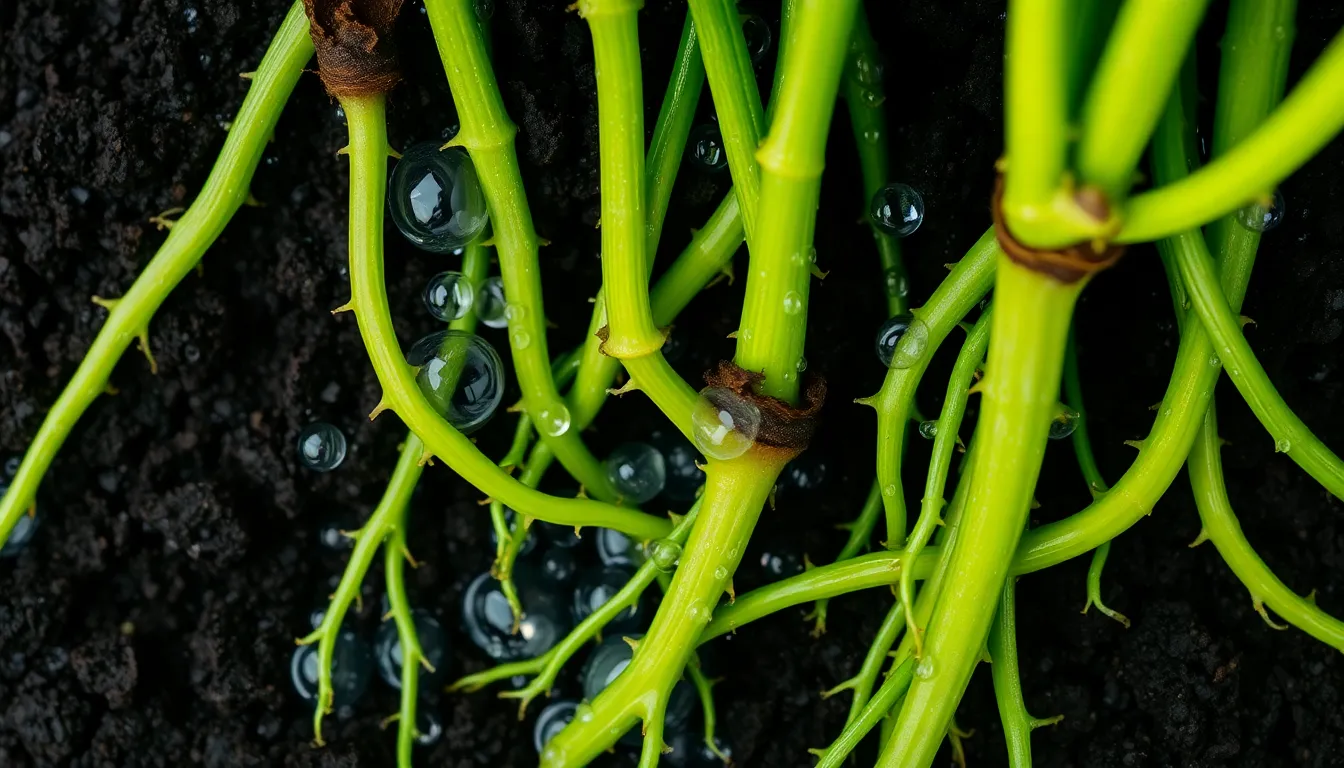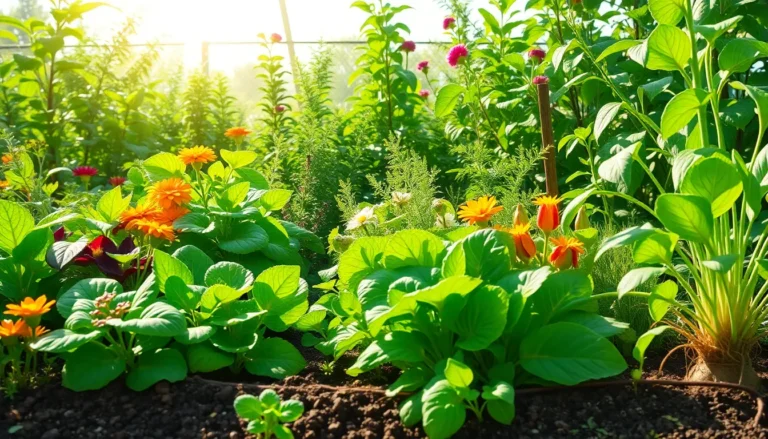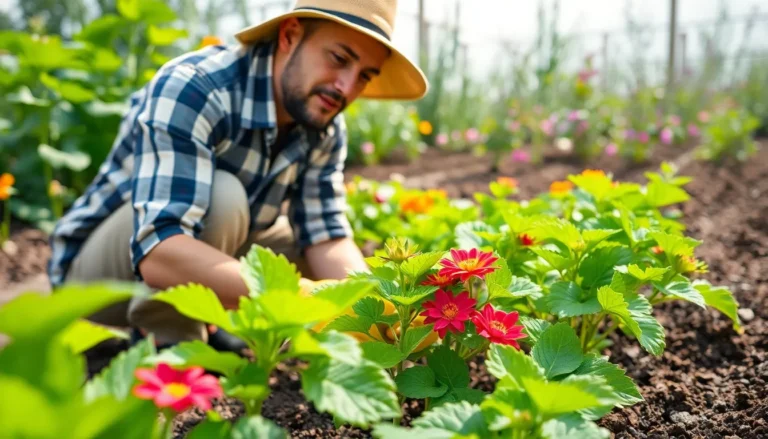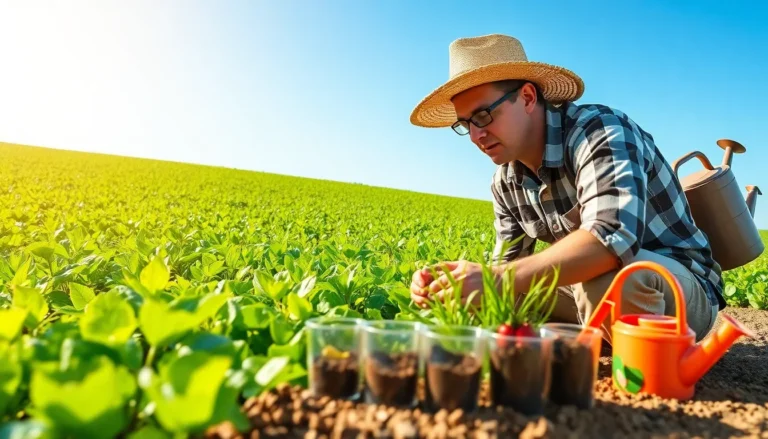What Are Some of the Resources That Plants Need to Survive? Discover the Essentials

Plants might seem like the quiet roommates of the natural world, but they’re actually thriving on a few essential resources to keep their green engines running. Ever wonder what keeps them standing tall and turning sunlight into energy? It’s not just good vibes and a sprinkle of optimism—plants rely on sunlight, water, and nutrients from the soil to survive and flourish.
Without these vital ingredients, they’d be as sad as a cactus in a rainstorm. Sunlight fuels their photosynthesis party, while water hydrates their thirsty roots. Nutrients from the soil act like a buffet for plants, ensuring they have the strength to grow. So, let’s dig into the leafy details of what makes these green wonders tick and discover how they manage to thrive in their leafy kingdom.
What Are Some of the Resources That Plants Need to Survive?
Plants rely heavily on sunlight for survival. Sunlight fuels photosynthesis, allowing plants to convert light energy into chemical energy needed for growth. Alongside sunlight, water plays a critical role by hydrating plant cells. Water uptake occurs through roots, providing essential moisture for various physiological processes.
Soil nutrients constitute another vital resource. Plants absorb macronutrients like nitrogen, phosphorus, and potassium to support their growth and development. Micronutrients such as iron, manganese, and zinc contribute to specific functions, ensuring plants remain healthy.
Air serves as an important resource, specifically carbon dioxide. Plants intake carbon dioxide during photosynthesis, releasing oxygen as a byproduct. This process not only supports their own needs but also benefits the entire ecosystem.
Temperature influences plant survival as well. Optimal temperature ranges vary by species, affecting metabolic processes related to growth, flowering, and fruiting. Each plant species has specific thermal requirements, which impact their geographic distribution.
Finally, space holds significance in resource availability. Crowded conditions can hinder growth by limiting access to sunlight, water, and nutrients. Adequate space promotes healthy development by allowing plants to spread their roots and leaves effectively.
Recognizing these essential resources highlights the interconnectedness of the ecosystem and the conditions necessary for plant survival.
Water

Water serves as a critical resource for plants, influencing their growth, development, and overall health. Adequate hydration fosters various physiological processes essential for survival.
Importance of Water for Plants
Water supports photosynthesis, the process by which plants convert light energy into chemical energy. Moisture plays a crucial role in nutrient transport, allowing essential minerals to move from the soil into plant cells. Plants rely on water to maintain turgor pressure, keeping tissues firm and supporting structural integrity. Additionally, transpiration—a process where water evaporates from leaves—helps regulate temperature and facilitates nutrient movement. A shortage of water can lead to wilting, stunted growth, and even death, demonstrating its vital importance for plant life.
Methods of Water Absorption
Plants utilize roots to absorb water, with root hairs increasing surface area for uptake. Capillary action helps draw water from soil particles into roots. Specifically, osmosis enables water to flow into root cells, creating a balance between soil and plant water concentrations. Some plants also adapt by developing specialized structures, such as deep taproots or extensive fibrous root systems, to access water more efficiently. In arid conditions, certain species experience reduced transpiration rates to conserve moisture while still facilitating necessary uptake from the available water supply.
Light
Light is essential for plant survival, primarily fueling the process of photosynthesis. Plants rely on sunlight to transform light energy into chemical energy, vital for growth.
Role of Sunlight in Photosynthesis
Sunlight plays an integral role in photosynthesis, where chlorophyll absorbs light, producing glucose and oxygen. This process enables plants to synthesize their food from carbon dioxide and water. Energy captured through sunlight supports various metabolic functions, driving overall plant development. Plants adapt to varying light conditions by altering growth patterns and leaf structures to maximize light absorption. Without adequate sunlight, photosynthetic efficiency declines, limiting growth and health.
Different Light Requirements
Different plants exhibit unique light requirements influenced by species and habitat. Some thrive in full sun, demanding high light exposure, while others prefer shade, with reduced light needs for optimal health. Succulents and cacti, for instance, flourish in bright conditions, storing energy efficiently. Shade-loving plants like ferns and hostas thrive under tree canopies, requiring indirect light for growth. Adjusting light conditions can significantly impact photosynthetic rates, overall health, and flowering patterns.
Nutrients
Plants rely on various nutrients for optimal growth and health. Macronutrients such as nitrogen, phosphorus, and potassium are essential for processes like photosynthesis and energy transfer. Micronutrients including iron, manganese, and zinc support metabolic functions, influencing growth stability.
Essential Nutrients for Plant Growth
Nitrogen fuels leaf growth and chlorophyll production. Phosphorus drives root establishment and flowering, while potassium enhances fruit quality and disease resistance. Each nutrient plays a distinct role, contributing to overall plant vitality. Proper balance is crucial; excess or deficiency can disrupt metabolic functions.
Nutrient Uptake Mechanisms
Roots absorb nutrients through specialized structures. Root hairs increase surface area, promoting effective uptake. Nutrients enter plant cells via active transport or passive diffusion mechanisms. Soil pH influences nutrient availability; slight changes can significantly impact absorption rates. Some plants develop symbiotic relationships, such as with mycorrhizal fungi, to enhance nutrient acquisition.
Soil
Soil serves as a fundamental resource for plant survival, providing essential nutrients, support, and moisture. It plays a crucial role in plant health and growth, making it necessary to understand its types and characteristics.
Types of Soil and Their Characteristics
Loamy soil holds an ideal balance of sand, silt, and clay, offering excellent drainage and nutrient retention. Clay soil retains moisture but can suffocate roots due to poor drainage. Sandy soil drains quickly, often requiring more frequent watering. Silt soil possesses fine particles that are nutrient-rich, though it can be prone to erosion. Each type of soil affects plant growth in different ways, highlighting the importance of selecting the right type for specific crops or plants.
Importance of Soil Health
Healthy soil fosters robust plant growth by providing adequate nutrients and a balanced ecosystem of microorganisms. Soil health influences water retention, enabling plants to access moisture effectively. Beneficial microbes and fungi improve nutrient availability through symbiotic relationships with plant roots. Maintaining soil structure prevents compaction, allowing roots to expand and absorb more nutrients. Practices like crop rotation and organic amendments enhance soil health, ensuring optimal conditions for plant development.
Conclusion
Understanding the essential resources that plants need for survival is crucial for anyone interested in gardening or ecology. Sunlight water and soil nutrients form the foundation of healthy plant growth. Each resource plays a unique role in supporting various physiological processes and overall health.
By recognizing the interconnectedness of these elements and the specific needs of different plant species it’s possible to create optimal environments for growth. Whether it’s ensuring adequate light conditions or maintaining soil health these practices contribute to thriving plants and a balanced ecosystem. Cultivating this knowledge not only enhances gardening success but also fosters a deeper appreciation for the natural world.



